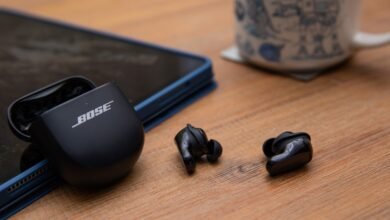Belkin’s $80 Power Bank Doubles as a Smartphone Camera Grip

▼ Summary
– Belkin’s Stage PowerGrip, first announced at CES 2025, is now available for $79.99 and offers extra functionality that may justify its price for smartphone photographers.
– It includes a built-in 30-inch retractable USB-C cable, USB-C charging port, and comes in powder blue, sandbox, and black color options.
– Additional features include an LCD battery display and a bottom screw mount for tripod attachment, making it more capable than Apple’s $90 ShiftCam SnapGrip Pro.
For smartphone photographers seeking better stability and extended battery life, Belkin’s new Stage PowerGrip offers a unique two-in-one solution that combines a 9,300mAh power bank with an ergonomic camera grip. Priced at $79.99, this accessory directly addresses the handling challenges of modern phones, which often lack the comfortable grip of traditional cameras despite their advanced imaging capabilities.
The PowerGrip features a DSLR-inspired handle that provides a secure, natural hold whether shooting in landscape or portrait orientation. A dedicated shutter button sits conveniently on the top edge, connecting via Bluetooth to trigger your phone’s camera without touching the screen. This design prevents shaky shots and makes extended photography sessions far more comfortable.
Available in powder blue, sandbox, and black finishes, the device includes multiple charging options that outperform competing products. While Apple’s $90 ShiftCam SnapGrip Pro offers just 5,000mAh capacity and dual-device charging, Belkin’s version supports charging three devices simultaneously through its magnetic Qi wireless charger, USB-C port, and built-in 30-inch retractable USB-C cable.
Additional thoughtful features include a small LCD display that clearly shows remaining battery percentage and a standard tripod screw mount integrated into the base of the grip. This combination of photographic support and versatile power delivery makes the PowerGrip particularly valuable for content creators, travel photographers, and anyone who regularly uses their smartphone for extended shooting sessions where both battery life and stability are concerns.
(Source: The Verge)

